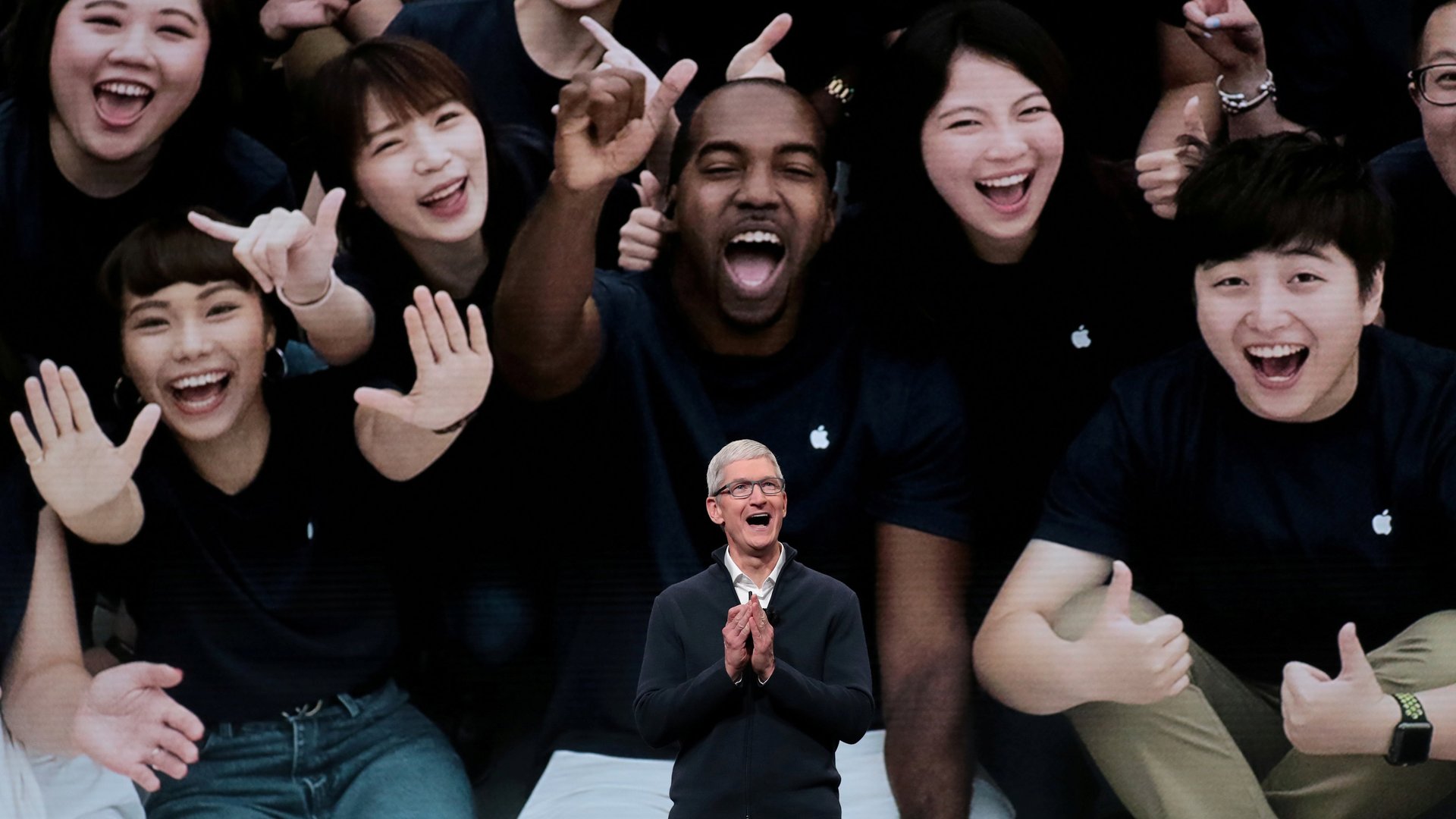Everyone seems fine with Apple making iPhones more expensive
It’s been a busy week for Apple.


It’s been a busy week for Apple.
On Tuesday, Oct. 30, the company held its second product launch event in just over a month, and today (Nov. 1) reported its fourth-quarter earnings (its fiscal year ends in September).
While prospective customers may have been wooed by the new iPad Pros and Mac computers that Apple showed earlier in the week, the market was generally indifferent, with the company’s stock price only gaining about $1 on the day of its event. Investors were likely waiting for their big event today, where Apple said it expected to generate between $60 billion and $62 billion in revenue.
Apple comfortably beat that guidance with revenues of $62.9 billion, a jump of nearly 20% over the same quarter last year.
But those numbers weren’t enough for investors, most likely because Apple’s guidance for the next quarter was lower than analysts had been expecting. Additionally, the company said it would no longer break out unit sales of iPhones, iPads, and Macs, the type of move that frustrates investors, who are always looking for more details, not fewer. The stock dropped more than 7% in after-hours trading, dragging Apple’s market capitalization below $1 trillion.
Apple said it expects to generate between $89 billion and $93 billion in sales during the first quarter of 2019, which encompasses the holiday season, and when all of Apple’s products announced in the fall are usually on sale. A year earlier, Apple posted revenue of $88.3 billion in the quarter, meaning the low-end guidance is essentially flat.
Apple’s services business, which includes sales of apps, games, subscriptions, and AppleCare, continued its tear. Now the company’s second-largest business, it generated nearly $10 billion in revenue in the most recently completed quarter, a jump of about 17% over the same period last year. The segment is now the size of a Fortune 100 company on its own, and has proven to be a reliable, predictable source of recurring revenue for the company, which is nice insurance in the event consumers stopped buying its latest gadgets.
But they are buying them. In droves. And it doesn’t appear Apple’s increasingly costly devices are putting anyone off: Last year it introduced its first $1,000 phone in the iPhone X, and recently unveiled a suite of new devices that were all hundreds of dollars more than their previous iterations.
Apple sold 46.9 million iPhones this quarter, below the 48.4 million that analysts had been expecting. This could also be contributing to the company’s stock price plummeting in after-hours trading.
Still, the average selling price of an iPhone shot back up to its second-highest price ever, at around $792. This would suggest that the majority of customers are opting for costlier devices, like the iPhone X, and the new iPhone Xs and Xs Max, which starts at $1,100. Even if fewer people are buying phones, they are buying more expensive models.
It was a mixed bag of results of Apple’s computer-like businesses, however. Just days after releasing a new iPad Pro and new computers, its seems consumers may have been waiting to see what Apple was announcing before picking up a new device. Shipments of both were down when compared to the same quarter last year—off 6% for iPads, and 2% for Macs. While this hurt Apple’s iPad revenue (which was $4.08 billion for the quarter, basically flat over last year), the company posted a small rise in computer sales—$7.41 billion for the quarter, compared with $7.17 billion last year. This is likely due to the fact Apple’s more expensive laptops had been refreshed over the year, which CEO Tim Cook said on the call happened to be right in time for when many students were returning to school. (Its less expensive laptop, the MacBook Air, was just refreshed on Tuesday.)
Apple’s other products are grouped together in a catchall business line that includes sales of the Apple Watch, AirPods, iPods, HomePods, Beats headphones, and other accessories. The company hasn’t broken out how many watches it’s sold since the wearable first hit shelves in 2015, but it seems the device has developed into a sleeper hit—Cook said on the call that along with the iPhone, its “wearables” (which he uses to slightly confusingly to refer to headphones and the Apple Watch) drove revenue gains. The segment generated $4.23 billion for the quarter, a full $1 billion more than it did in the same quarter last year.
The company has struggled to diversify where it generates sales, with the Americas and Europe still accounting for the bulk of its revenues. Cook said on the call that business in India was flat for the quarter. And despite opening dozens of stores across China in the last few years, it’s struggled to develop that market, where consumers have so far preferred cheaper, homegrown models. However, Cook said at Tuesday’s event that 71% of new Macs are being sold in China. Perhaps Apple has lost the smartphone wars to cheaper competitors, but if it can offer something in laptops that local competitors can’t (although they are definitely getting close), perhaps that could end up being the foothold into the world’s most populous country.